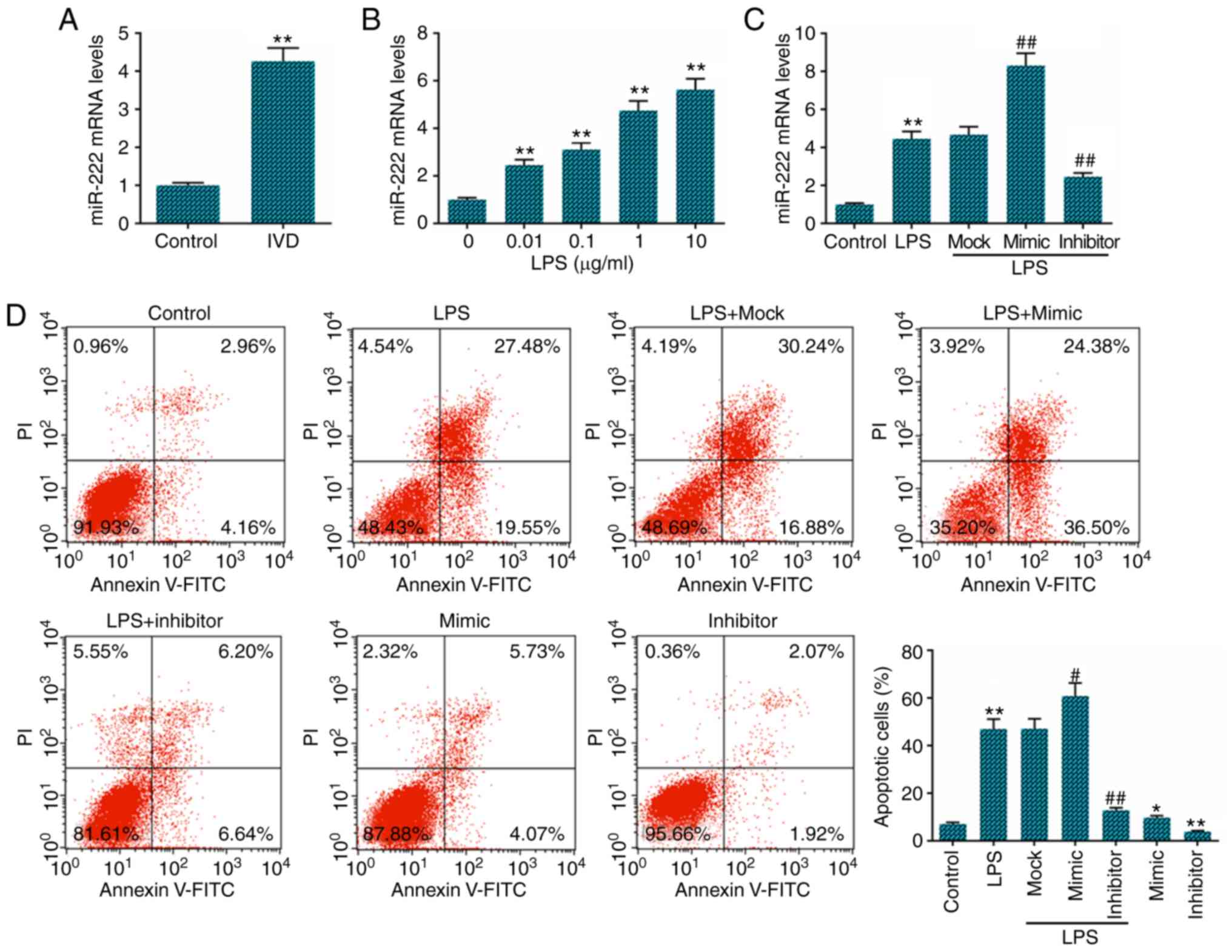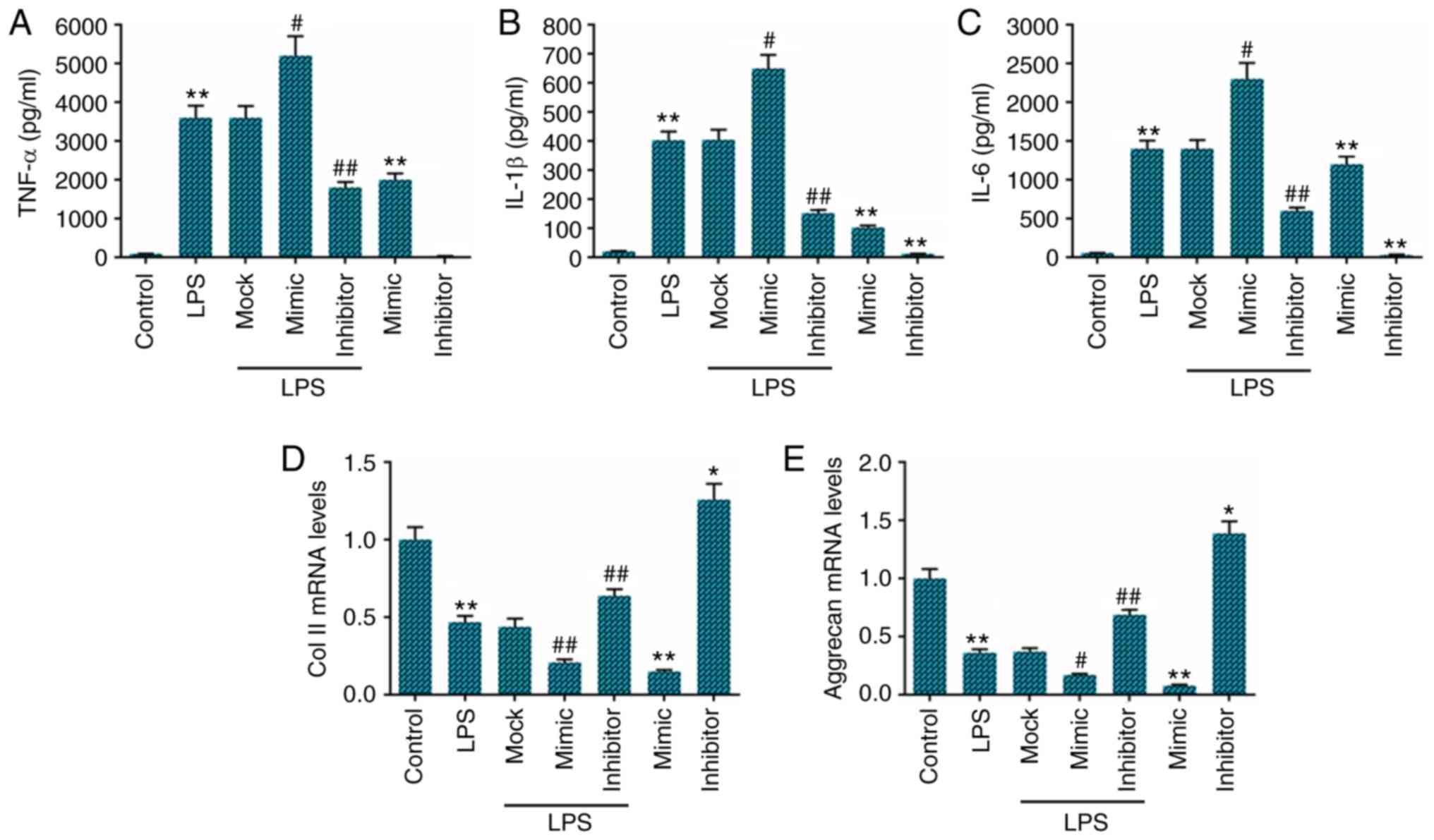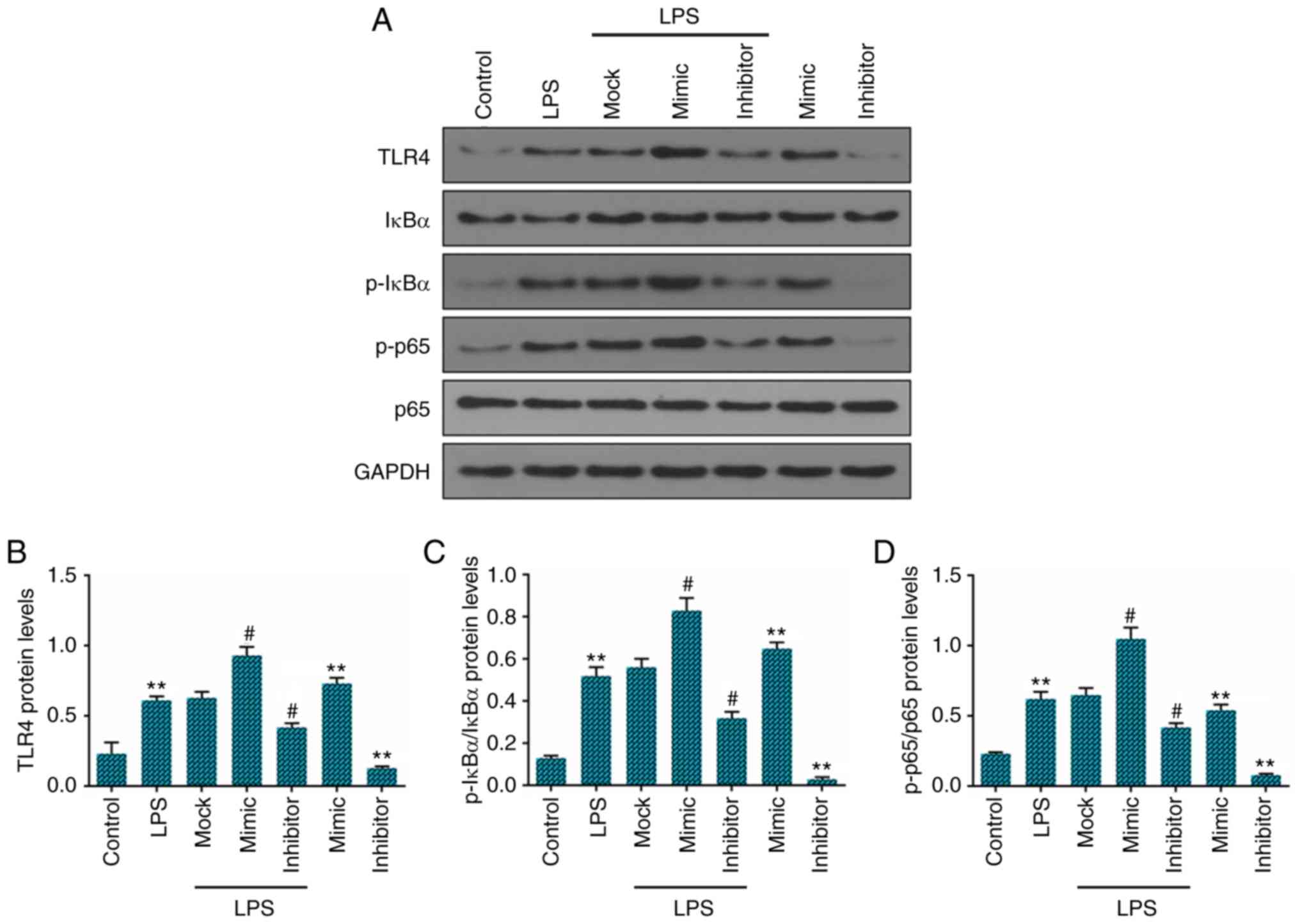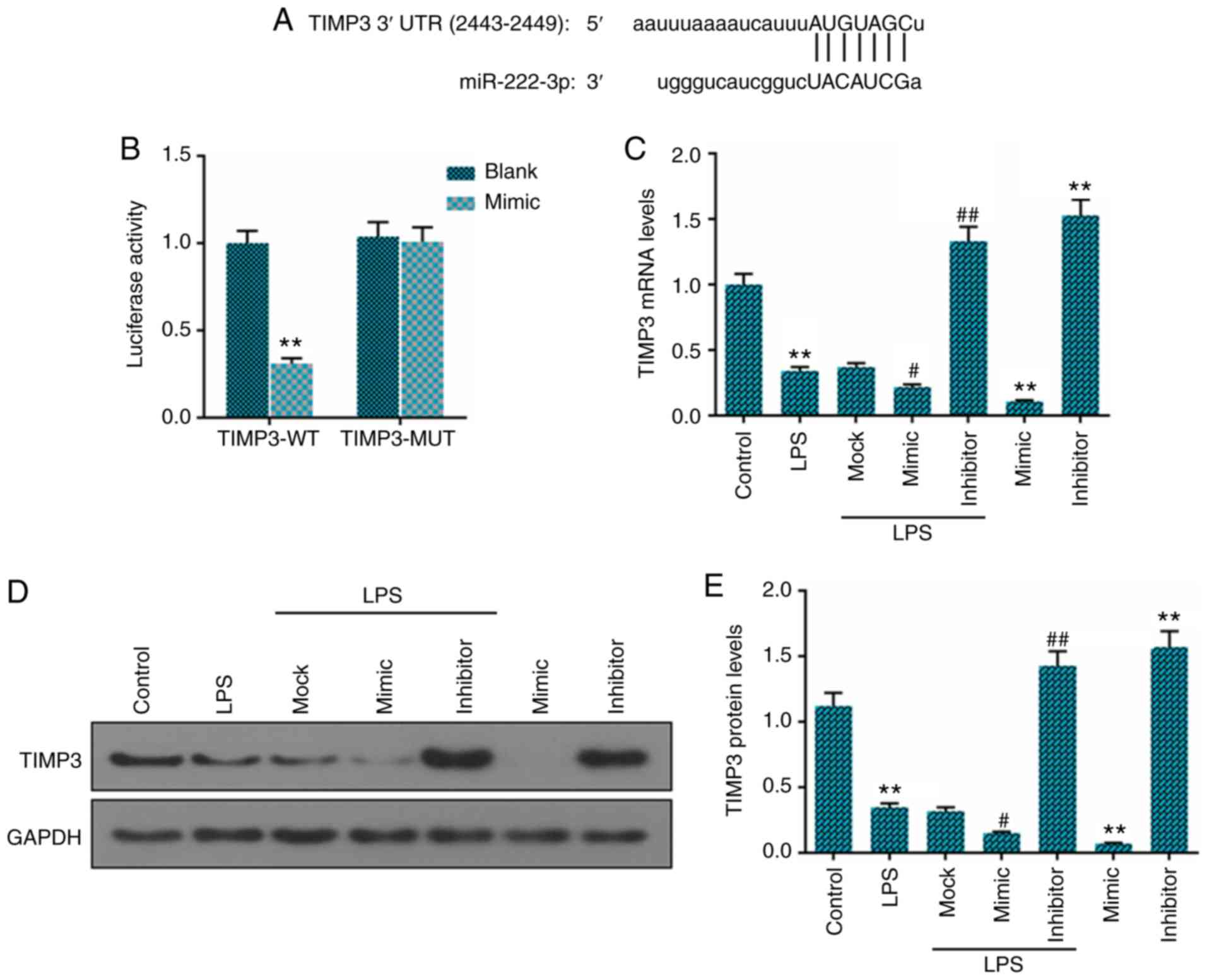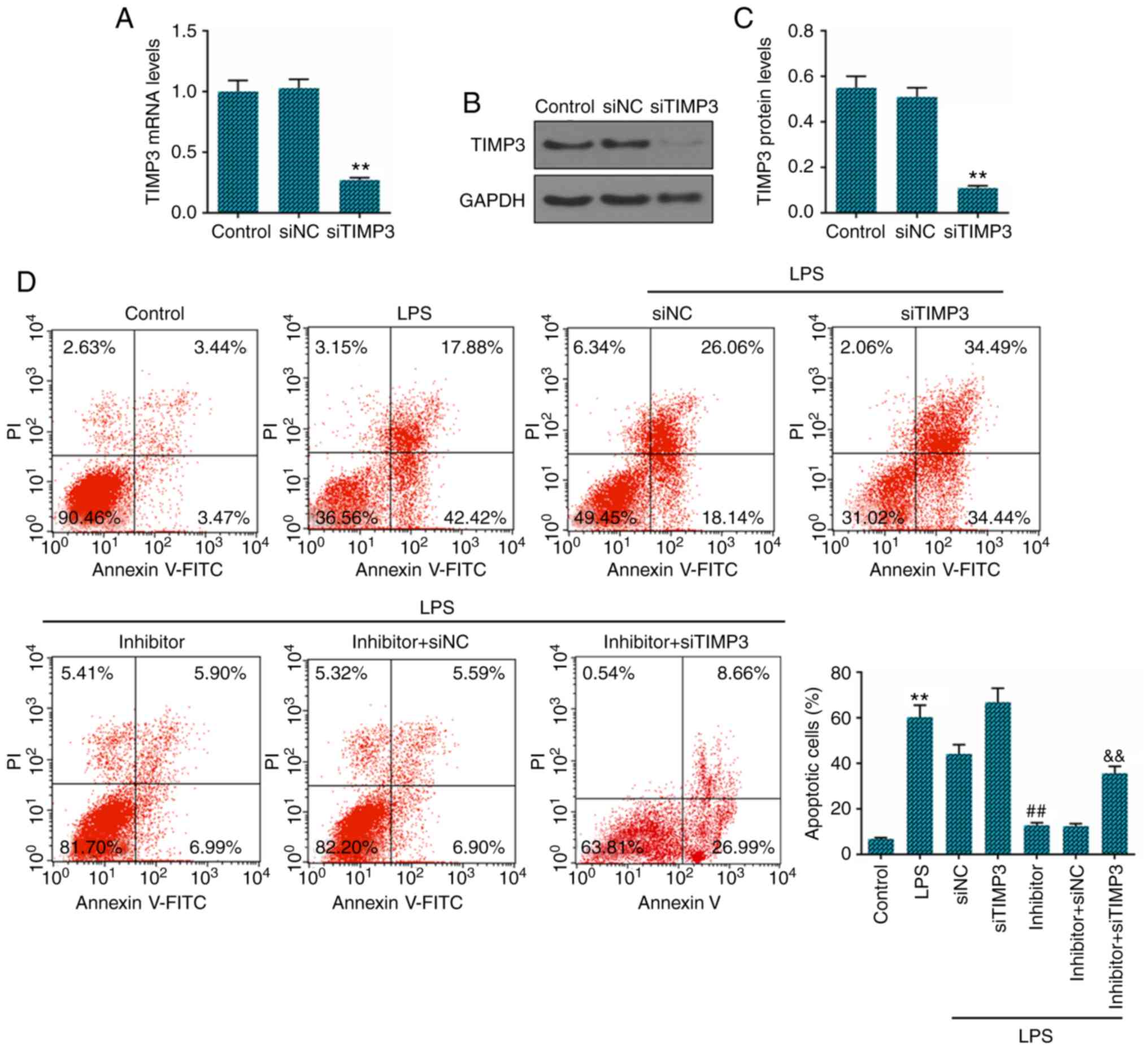|
1
|
Taher F, Essig D, Lebl DR, Hughes AP, Sama
AA, Cammisa FP and Girardi FP: Lumbar degenerative disc disease:
Current and future concepts of diagnosis and management. Adv
Orthop. 2012:9707522012. View Article : Google Scholar : PubMed/NCBI
|
|
2
|
Chan SC and Gantenbein-Ritter B:
Intervertebral disc regeneration or repair with biomaterials and
stem cell therapy-feasible or fiction? Swiss Med Wkly.
142:w135982012.
|
|
3
|
Park JB, Lee JK, Park SJ, Kim KW and Riew
KD: Mitochondrial involvement in fas-mediated apoptosis of human
lumbar disc cells. J Bone Joint Surg Am. 87:1338–1342.
2005.PubMed/NCBI
|
|
4
|
Solovieva S, Lohiniva J, Leino-Arjas P,
Raininko R, Luoma K, Ala-Kokko L and Riihimäki H: Intervertebral
disc degeneration in relation to the COL9A3 and the IL-1ss gene
polymorphisms. Eur Spine J. 15:613–619. 2006. View Article : Google Scholar
|
|
5
|
Guehring T, Omlor GW, Lorenz H, Bertram H,
Steck E, Richter W, Carstens C and Kroeber M: Stimulation of gene
expression and loss of anular architecture caused by experimental
disc degeneration-an in vivo animal study. Spine (Phila Pa 1976).
30:2510–2515. 2005. View Article : Google Scholar
|
|
6
|
Stokes IA and Iatridis JC: Mechanical
conditions that accelerate intervertebral disc degeneration:
Overload versus immobilization. Spine (Phila Pa 1976).
29:2724–2732. 2004. View Article : Google Scholar
|
|
7
|
Migliorini F, Rath B, Tingart M, Baroncini
A, Quack V and Eschweiler J: Autogenic mesenchymal stem cells for
intervertebral disc regeneration. Int Orthop. 43:1027–1036. 2019.
View Article : Google Scholar
|
|
8
|
Johnson ZI, Shapiro IM and Risbud MV:
Extracellular osmolarity regulates matrix homeostasis in the
intervertebral disc and articular cartilage: Evolving role of
TonEBP. Matrix Biol. 40:10–16. 2014. View Article : Google Scholar : PubMed/NCBI
|
|
9
|
Aguiar DJ, Johnson SL and Oegema TR:
Notochordal cells interact with nucleus pulposus cells: Regulation
of proteoglycan synthesis. Exp Cell Res. 246:129–137. 1999.
View Article : Google Scholar : PubMed/NCBI
|
|
10
|
Hsieh AH and Twomey JD: Cellular
mechanobiology of the inter-vertebral disc: New directions and
approaches. J Biomech. 43:137–145. 2010. View Article : Google Scholar
|
|
11
|
McCarty MF: Preclinical studies suggest
complex nutraceutical strategies may have potential for preventing
and managing sepsis. Altern Ther Health Med. 21(Suppl 2): S56–S67.
2015.
|
|
12
|
Gordon JW, Shaw JA and Kirshenbaum LA:
Multiple facets of NF-kB in the heart: To be or not to NF-kB. Circ
Res. 108:1122–1132. 2011. View Article : Google Scholar : PubMed/NCBI
|
|
13
|
Ghosh S, May MJ and Kopp EB: NF-kappa B
and Rel proteins: Evolutionarily conserved mediators of immune
responses. Annu Rev Immunol. 16:225–260. 1998. View Article : Google Scholar : PubMed/NCBI
|
|
14
|
Bartel DP: MicroRNAs: Genomics,
biogenesis, mechanism, and function. Cell. 116:281–297. 2004.
View Article : Google Scholar : PubMed/NCBI
|
|
15
|
Jovanovic M and Hengartner MO: miRNAs and
apoptosis: RNAs to die for. Oncogene. 25:6176–6187. 2006.
View Article : Google Scholar : PubMed/NCBI
|
|
16
|
Selbach M, Schwanhausser B, Thierfelder N,
Fang Z, Khanin R and Rajewsky N: Widespread changes in protein
synthesis induced by microRNAs. Nature. 455:58–63. 2008. View Article : Google Scholar : PubMed/NCBI
|
|
17
|
Ma Y, Yu S, Zhao W, Lu Z and Chen J:
miR-27a regulates the growth, colony formation and migration of
pancreatic cancer cells by targeting Sprouty2. Cancer Lett.
298:150–158. 2010. View Article : Google Scholar : PubMed/NCBI
|
|
18
|
Wei T, Ye P, Peng X, Wu LL and Yu GY:
Prognostic value of miR-222 in various cancers: A systematic review
and meta-analysis. Clin Lab. 62:1387–1395. 2016. View Article : Google Scholar
|
|
19
|
Hu P, Feng B, Wang G, Ning B and Jia T:
Microarray based analysis of gene regulation by microRNA in
intervertebral disc degeneration. Mol Med Rep. 12:4925–4930. 2015.
View Article : Google Scholar : PubMed/NCBI
|
|
20
|
Balkowiec M, Maksym RB and Wlodarski PK:
The bimodal role of matrix metalloproteinases and their inhibitors
in etiology and pathogenesis of endometriosis (Review). Mol Med
Rep. 18:3123–3136. 2018.PubMed/NCBI
|
|
21
|
Lu Y, Roy S, Nuovo G, Ramaswamy B, Miller
T, Shapiro C, Jacob ST and Majumder S: Anti-microRNA-222
(anti-miR-222) and -181B suppresses growth of tamoxifen-resistant
xenografts in mouse by targeting TIMP3 protein and modulating
mitogenic signal. J Biol Chem. 293:35882018. View Article : Google Scholar : PubMed/NCBI
|
|
22
|
Zhang C, Zhang J, Hao J, Shi Z, Wang Y,
Han L, Yu S, You Y, Jiang T, Wang J, et al: High level of
miR-221/222 confers increased cell invasion and poor prognosis in
glioma. J Transl Med. 10:1192012. View Article : Google Scholar : PubMed/NCBI
|
|
23
|
Lei Y, Liu Z and Yang W: Negative
correlation of cytoplasm TIMP3 with miR-222 indicates a good
prognosis for NSCLC. Onco Targets Ther. 11:5551–5557. 2018.
View Article : Google Scholar : PubMed/NCBI
|
|
24
|
Li Y, Li K, Han X, Mao C, Zhang K, Zhao T
and Zhao J: The imbalance between TIMP3 and matrix-degrading
enzymes plays an important role in intervertebral disc
degeneration. Biochem Biophys Res Commun. 469:507–514. 2016.
View Article : Google Scholar
|
|
25
|
Kwon WK, Moon HJ, Kwon TH, Park YK and Kim
JH: The role of Hypoxia in angiogenesis and extracellular matrix
regulation of intervertebral disc cells during inflammatory
reactions. Neurosurgery. 81:867–875. 2017.PubMed/NCBI
|
|
26
|
Livak KJ and Schmittgen TD: Analysis of
relative gene expression data using real-time quantitative PCR and
the 2(−Delta Delta C(T)) method. Methods. 25:402–408. 2001.
View Article : Google Scholar
|
|
27
|
Zhang Q, Weng Y, Jiang Y, Zhao S, Zhou D
and Xu N: Overexpression of miR-140-5p inhibits
lipopolysaccharide-induced human intervertebral disc inflammation
and degeneration by downregulating toll-like receptor 4. Oncol Rep.
40:793–802. 2018.PubMed/NCBI
|
|
28
|
Tao Li Z, Wang Y, Jiang X, Li P, Peng J,
Zhang M, Chen X, Liu K, Zhen HP, et al: Tumor-Secreted exosomal
miR-222 promotes tumor progression via regulating P27 expression
and Re-localization in pancreatic cancer. Cell Physiol Biochem.
51:610–629. 2018. View Article : Google Scholar
|
|
29
|
Nie X and Tian H: Correlation between
miR-222 and uterine cancer and its prognostic value. Oncol Lett.
16:1722–1726. 2018.PubMed/NCBI
|
|
30
|
Gu J, Wang Y, Wang X, Zhou D, Shao C, Zhou
M and He Z: Downregulation of lncRNA GAS5 confers tamoxifen
resistance by activating miR-222 in breast cancer. Cancer Lett.
434:1–10. 2018. View Article : Google Scholar : PubMed/NCBI
|
|
31
|
Lambertini E, Lolli A, Vezzali F,
Penolazzi L, Gambari R and Piva R: Correlation between Slug
transcription factor and miR-221 in MDA-MB-231 breast cancer cells.
BMC Cancer. 12:4452012. View Article : Google Scholar : PubMed/NCBI
|
|
32
|
Brognara E, Fabbri E, Bazzoli E, Montagner
G, Ghimenton C, Eccher A, Cantù C, Manicardi A, Bianchi N, Finotti
A, et al: Uptake by human glioma cell lines and biological effects
of a peptide-nucleic acids targeting miR-221. J Neurooncol.
118:19–28. 2014. View Article : Google Scholar : PubMed/NCBI
|
|
33
|
Penolazzi L, Lambertini E, Bergamin LS,
Roncada T, De Bonis P, Cavallo M and Piva R: MicroRNA-221 silencing
attenuates the degenerated phenotype of intervertebral disc cells.
Aging (Albany NY). 10:2001–2015. 2018. View Article : Google Scholar
|
|
34
|
Loreto C, Musumeci G, Castorina A, Loreto
C and Martinez G: Degenerative disc disease of herniated
intervertebral discs is associated with extracellular matrix
remodeling, vimentin-positive cells and cell death. Ann Anat.
193:156–162. 2011. View Article : Google Scholar : PubMed/NCBI
|
|
35
|
Wang WJ, Yu XH, Wang C, Yang W, He WS,
Zhang SJ, Yan YG and Zhang J: MMPs and ADAMTSs in intervertebral
disc degeneration. Clin Chim Acta. 448:238–246. 2015. View Article : Google Scholar : PubMed/NCBI
|
|
36
|
Li Y, Li K, Mao L, Han X, Zhang K, Zhao C
and Zhao J: Cordycepin inhibits LPS-induced inflammatory and matrix
degradation in the intervertebral disc. PeerJ. 4:e19922016.
View Article : Google Scholar : PubMed/NCBI
|
|
37
|
Wang C, Yu X, Yan Y, Yang W, Zhang S,
Xiang Y, Zhang J and Wang W: Tumor necrosis factor-α: A key
contributor to intervertebral disc degeneration. Acta Biochim
Biophys Sin (Shanghai). 49:1–13. 2017. View Article : Google Scholar
|
|
38
|
Yang W, Yu XH, Wang C, He WS, Zhang SJ,
Yan YG, Zhang J, Xiang YX and Wang WJ: Interleukin-1β in
intervertebral disk degeneration. Clin Chim Acta. 450:262–272.
2015. View Article : Google Scholar : PubMed/NCBI
|
|
39
|
Wang X, Meng Q, Qiu C, Li P, Qu R, Wang W,
Wang Y, Liu L and Zhao Y: Potential therapeutic role of Co-Q10 in
alleviating intervertebral disc degeneration and suppressing
IL-1β-mediated inflammatory reaction in NP cells. Int
Immunopharmacol. 64:424–431. 2018. View Article : Google Scholar : PubMed/NCBI
|
|
40
|
Wang G, Huang K, Dong Y, Chen S, Zhang J,
Wang J, Xie Z, Lin X, Fang X and Fan S: Lycorine suppresses
endplate-chondrocyte degeneration and prevents intervertebral disc
degeneration by inhibiting NF-kB signalling pathway. Cell Physiol
Biochem. 45:1252–1269. 2018. View Article : Google Scholar
|
|
41
|
Wang J, Pan H, Li X, Zhang K, Li Z, Wang
H, Zheng Z and Liu H: Hypoxia suppresses serum deprivation-induced
degradation of the nucleus pulposus cell extracellular matrix
through the JNK and NF-kB pathways. J Orthop Res. 35:2059–2066.
2017. View Article : Google Scholar
|
|
42
|
Xing F, Zhang W, Wen J, Bai L, Gu H, Li Z,
Zhang J, Tao YX and Xu JT: TLR4/NF-kB signaling activation in
plantar tissue and dorsal root ganglion involves in the development
of postoperative pain. Mol Pain. 14:17448069188070502018.
View Article : Google Scholar
|
|
43
|
Liao W, He X, Yi Z, Xiang W and Ding Y:
Chelidonine suppresses LPS-Induced production of inflammatory
mediators through the inhibitory of the TLR4/NF-κB signaling
pathway in RAW264.7 macrophages. Biomed Pharmacother.
107:1151–1159. 2018. View Article : Google Scholar : PubMed/NCBI
|
|
44
|
Sun Z, Jian Y, Fu H and Li B: MiR-532
downregulation of the Wnt/β-catenin signaling via targeting Bcl-9
and induced human intervertebral disc nucleus pulposus cells
apoptosis. J Pharmacol Sci. 138:263–270. 2018. View Article : Google Scholar : PubMed/NCBI
|
|
45
|
Gruber HE and Hanley EN Jr: Analysis of
aging and degeneration of the human intervertebral disc. Comparison
of surgical specimens with normal controls. Spine (Phila Pa 1976).
23:751–757. 1998. View Article : Google Scholar
|
|
46
|
Zhang YH, Zhao CQ, Jiang LS and Dai LY:
Lentiviral shRNA silencing of CHOP inhibits apoptosis induced by
cyclic stretch in rat annular cells and attenuates disc
degeneration in the rats. Apoptosis. 16:594–605. 2011. View Article : Google Scholar : PubMed/NCBI
|
|
47
|
Zhang W and Liang Z: Comparison between
annexin V-FITC/PI and Hoechst33342/PI double stainings in the
detection of apoptosis by flow cytometry. Xi Bao Yu Fen Zi Mian Yi
Xue Za Zhi. 30:1209–1212. 2014.In Chinese. PubMed/NCBI
|
|
48
|
Zhang C, Kang C, Wang P, Cao Y, Lv Z, Yu
S, Wang G, Zhang A, Jia Z, Han L, et al: MicroRNA-221 and -222
regulate radiation sensitivity by targeting the PTEN pathway. Int J
Radiat Oncol Biol Phys. 80:240–248. 2011. View Article : Google Scholar : PubMed/NCBI
|
|
49
|
Xu Y, Bei Y, Shen S, Zhang J, Lu Y, Xiao J
and Li X: MicroRNA-222 promotes the proliferation of pulmonary
arterial smooth muscle cells by Targeting P27 and TIMP3. Cell
Physiol Biochem. 43:282–292. 2017. View Article : Google Scholar : PubMed/NCBI
|















